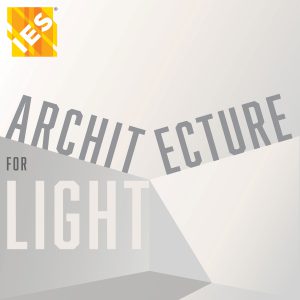
Architecture for Light: Part 1 - Heirloom Ideas, Modern Semantics and Current Realizations
-
Register
- Non-member - $40
- Member - $15

About this Course
Architecture for Light is one course in the IES's Indispensable Lighting Series. This series was designed to provide members, educators and the general public access to information about quality lighting. Architecture for Light was created by Kim and Paul Mercier - who are both past Presidents of the IES - and their course consists of two parts; Part 1 is titled Heirloom Ideas, Modern Semantics and Current Realizations and Part 2 is titled Lighting Design in the Era of Energy Codes. Each part offers continuing eduction for learners; they can be purchased individually or as a package.
Description: Part 1 focuses on the influence energy codes have in the design process; the benefits of an integrated design team; the impact that people, materials, and geometry have on the lighting design process; and lighting strategies through the use of case studies.
Learning Objectives:
By the end of this course learners will be able to...
1. Understand the influence of energy codes in the lighting design process.
2. Identify the benefits of an integrated design team, which includes the lighting designer's involvement in the imaging sessions.
3. Explore the impact of people, materials, and geometry on the lighting design process for the built environment.
4. Examine lighting strategies through case studies that explore visual hierarchy, light and direction, and verticality.
Key:
Kimberly Mercier, MBA, PE, P.Eng., LEED AP
Managing Principal of Lighting Design Innovations
Kimberly Mercier is the Managing Principal of Lighting Design Innovations and is a lighting designer and professional engineer in the United States and Canada. She holds an MBA from SUNY at Buffalo and her experience includes managing electrical departments for consulting engineering firms in Calgary, Alberta and Buffalo and Rochester, NY. Kimberly is a LEED Accredited Professional and a Certified Lighting Efficiency Professional.Kimberly is a Past President of the Illuminating Engineering Society and award winning Lighting Designer and Educator.
Paul Mercier
Design Principal of Lighting Design Innovations
Paul Mercier is a professional member of the International Association of Lighting Designers and a professional lighting designer certified by the National Council on Qualifications for Lighting Professions. He holds an MS in Lighting from Queensland University of Technology. Paul has over 30 years’ experience in lighting design completing projects in centers across North America.
Mr. Mercier is a judge for international lighting design awards including those for the IES and General Electric. He has received numerous awards for interior – and exterior - lighting designs.
He is an adjunct instructor of undergraduate lighting design at SUNY Buffalo State University and a seasonal instructor for a post-graduate architectural lighting design course at the University of Calgary’s Faculty of Environmental Design. Paul instructs on several AIA approved course topics including: Lighting Emerging Technologies, LED Technologies and Applications, LED Architectural Applications and Heritage Landscape Lighting.
Paul is an International Past-President of the IES and Past Acting Executive Vice President of the organization. Mr. Mercier was the Featured Profile in Philips’ Luminous Spec Summer 2015 in which he described the relationship of his education to his success as a lighting designer as “…understanding the science of lighting provides you with the freedom to be creative.”
0:00 Introduction
5:08 The Original Disconnect
7:27 Efficiency of the Space
11:16 The Original Lighting Designers
16:40 Math Becomes Research
19:04 Transfer of Illumination
28:19 Creating the Unexpected
37:14 Light and Direction
41:09 Summations